Deep under the streets of London, behind blackened windows and down dark and oppressive passageways, lie the remnants of forgotten Underground stations.
Every day commuters walk over or past these stations, or pass their deserted buildings on their way to work. Perhaps they miss the subtle change in tiles as their train rattles through the tunnels, unaware of the deserted station they have just left behind.
It is inevitable that as passenger habits change, stations that were once popular become uneconomical to maintain. As with any main line railway, the London Underground has had to close stations over the years - some because of lack of use, some due to upgrades on the network causing lines to be re-routed, and others because new modern stations were built to replace the originals.
Yet many of these stations are still visible as ‘ghosts’ - in the glimpses caught of them when travelling between open stations, or the buildings that are still visible above ground. They have captured the imagination of enthusiasts for many years, and one station in particular is a popular location for filmmakers.
Aldwych is the terminus on a branch off the Piccadilly Line, 573 yards beyond Holborn. Opened under the name Strand on November 30 1907, it was renamed Aldwych on May 9 1915, when the station now known as Charing Cross was named Strand.
Aldwych (the name derives from the Old English for old settlement) was troubled from the very beginning. It had been part of a scheme known as the Great Northern & Strand Railway, an idea proposed to relieve the pressure on King’s Cross services, but the finances could not be raised.
Enter Charles Tyson Yerkes, an American financier. He was in the process of planning the Brompton & Piccadilly Circus Railway, and decided he could link the two routes.
On August 8 1902 the two railway companies were officially merged, and the Great Northern, Piccadilly & Brompton Railway was named three months later. The main railway from Hammersmith to Finsbury Park opened on December 15 1906, but the branch out to Aldwych was nearly a year behind.
There had been a couple of suggestions for extending the branch to Temple or Waterloo. This never happened, although the latter suggestion required the station to have a new location, and this is where the station now sits.
The site had been occupied since 1858 by the Royal Strand Theatre. However, the theatre was suffering financially, and it eventually closed on May 13 1905. The site was then bought by the GNPBR. Building of Aldwych station started months later on October 21 1905, and it was officially opened on November 30 1907.
The station closed on October 3 1994. So, nearly 20 years on, what still lies beneath the streets of the Strand? RAIL was taken on a tour of ‘The Secret Station’, as it is dubbed by the London Transport Museum.
The lifts have long since been out of action, so it’s a 160-step descent down a spiral staircase into the main station. Aldwych had three lifts (each with two shafts in case of a failure), but two of these were never used, the expected capacity having been far overestimated.
The three lifts are connected by a landing, which can just be seen through the grating behind them. The tiling and lighting on the landing was never completed - it never came into use because of the low passenger numbers.
The lifts are significant to Aldwych’s story, because they were the reason the station closed.
It would have cost £3 million to refurbish them to the type with automatic doors, and a further £3.8m for other station improvements. But with only 450 return trips a day, this level of investment could not be justified.
Down the passageway from the walkway connecting the lifts is Platform 1. When the station was still in use, two-car Standard Stock trains would serve this platform from Holborn. Because the trains were so short, they only took up one end of the platform - the lining was never finished at the far end, and the cast iron segments from the tunnel’s construction are still visible. A barrier was put across one end of the platform, to stop passengers going the wrong way when they alighted the train.
A variety of posters adorn the walls. They look as if they’ve been there since wartime, but in fact they have only been here for a couple of months, put up for a film shoot.
During the Second World War, most Underground stations served as shelters, although initially the Government wanted to keep the public above ground so that trains could continue running for as long as possible.
Aldwych became an air raid shelter in 1940. Toilets and a canteen were installed in the overrun tunnel, and sheltering Londoners would spend the night on the track.
Back to the present, and across the walkway to Platform 2, which also served an important purpose during the Second World War.
Closed in 1917 because the station had no need for the extra capacity, Platform 2 has had a variety of uses ever since. It was bricked off at either end to make it secure, and during the Second World War it held (among other things) most of the British Museum’s collection, china from Buckingham Palace, artefacts from the Sutton Hoo Anglo-Saxon royal burial site, and even the Elgin marbles.
The latter proved a real challenge. They had been brought down to platform level in the lifts, but by 1946, when it was time to move them back to the museum, use of the lifts was not allowed. They had to be carried up the steps and loaded onto a train on Platform 1.
Evidence of some of Platform 2’s other uses is still visible here.
An assortment of strange tiling on the walls reveals its use for testing tiles and adhesives for other Underground stations. Sticky glue remnants still hang from cracks in the wall, and the posters that can be seen on this platform date back to filming in the 1970s.
The yellow disability dots that alert partially sighted passengers to the edge of the platform were also tested here, as were various electrical, lighting and ventilation systems.
RAIL is not allowed through the little door at the Holborn end of the platform, which leads to a disused tunnel, because of asbestos. The door at the other end leads to a crumbling staircase and the overrun tunnel, provided in case the driver didn’t reach the stopping point in time. Overruns exist at all terminus stations on the Underground (apart from Kennington, on the Northern Line, which has a loop back in the other direction).
Random objects have been discarded in Platform 2’s overrun - an old chair and a wheelbarrow are among them.
Before heading back up to the booking hall, there is one last place to visit. At the top of the crumbling staircase next to the overrun tunnel, is a crossroads of eerie, mysterious passageways. This is the first time the public had been allowed into this part of the station.
One passageway has a staircase with a door at the end that leads onto Platform 1 - this is the door passengers would have used had the station been busier, but it was never needed. Opposite is a dark tunnel that leads to the back of the lifts.
Aldwych is on the footprint of the theatre that once stood in its place, and which was knocked down in 1905. The story goes that the leading lady of the last ever performance there, a musical entitled Miss Wingrove, was so annoyed at the quality of her final curtain call that she threatened to haunt the site.
Before the 2012 Olympic Games, the police used Aldwych for training, including bringing police dogs down there. But the dogs refused to enter this set of passageways. The only explanation police could come up with was that perhaps the ghost story is true…
- This feature was originally published in RAIL 739 on 8 January 2014




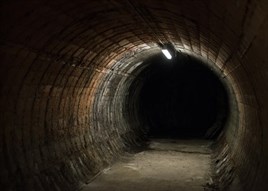
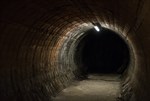
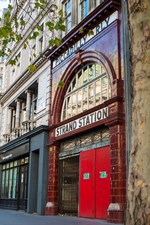
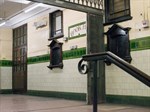
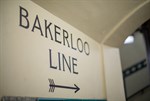









Login to comment
Comments
No comments have been made yet.